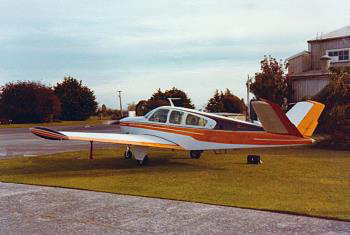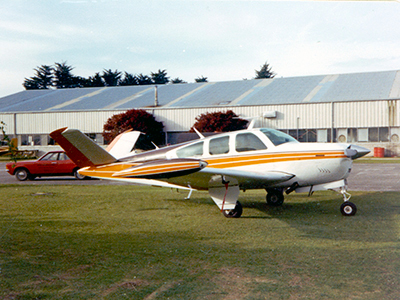Around the World with One Engine
Running on Empty - Gliding down to a Sunlit Sea Back in level flight, with the Bonanza again stabilized and having carefully switched the Fuel Selector to the auxiliary fuel tank behind my seat, I begin to contemplate the perilous situation I find myself in. I’m now fully cognizant of the dangerous implications of flying a single-engined airplane across two thousand miles of ocean … and it scares the living shite out of me; giving rise to a panic action to immediately turn the airplane 180° and head back to Newfoundland, the closest landfall, 250 miles away. But I know I won't do that, and this decision to continue becomes a life changing moment; not an epiphany, but rather a slow march to the gallows with the fervent hope that I could be spared at the last moment. The reasons for being out here are many and certainly important for my future in commercial aviation. Therefore, I must continue flying for another 15,000 miles to reach New Zealand: over oceans, deserts, mountain ranges and hostile territory with only one engine to remain airborne. For me to continue this epic journey, I need to ignore this one engine reality; believing that it'll not be a factor in my future survival. |
Around the World on One Engine - Part 1PODCAST |
Around the World on One Engine - Part 2PODCAST |
...made weak by time and fate, but strong in will
to strive, to seek, to find, and not to yield.
TENNYSON Ulysses



_thumb.jpg)
![This flight schedule, with actual flight times and fuel burns [some missing due lost records].](images/Vlarge%20Images/Ferry%20Flight%20Schedule_Actual_thumb.jpg)

